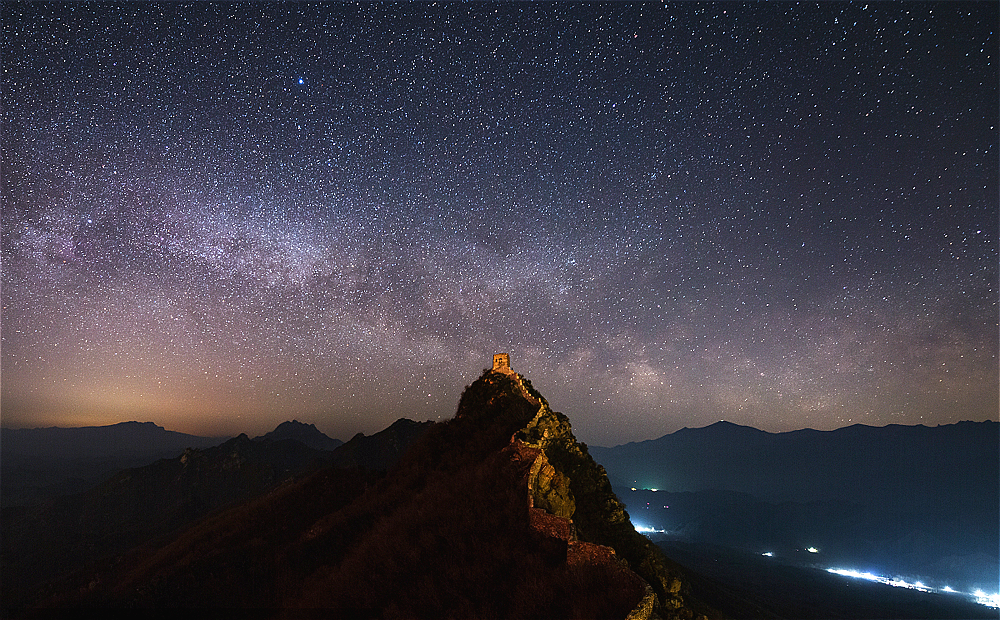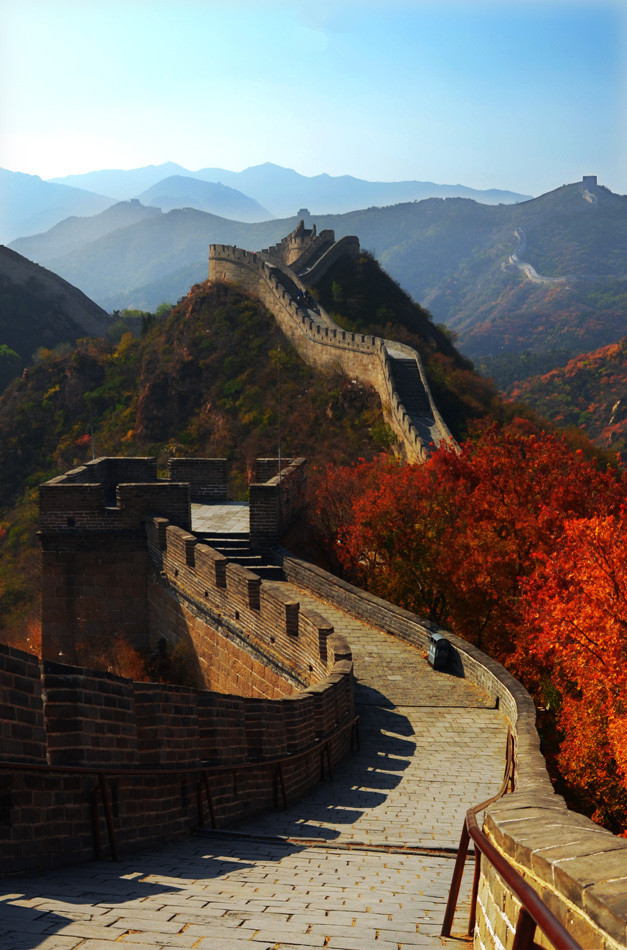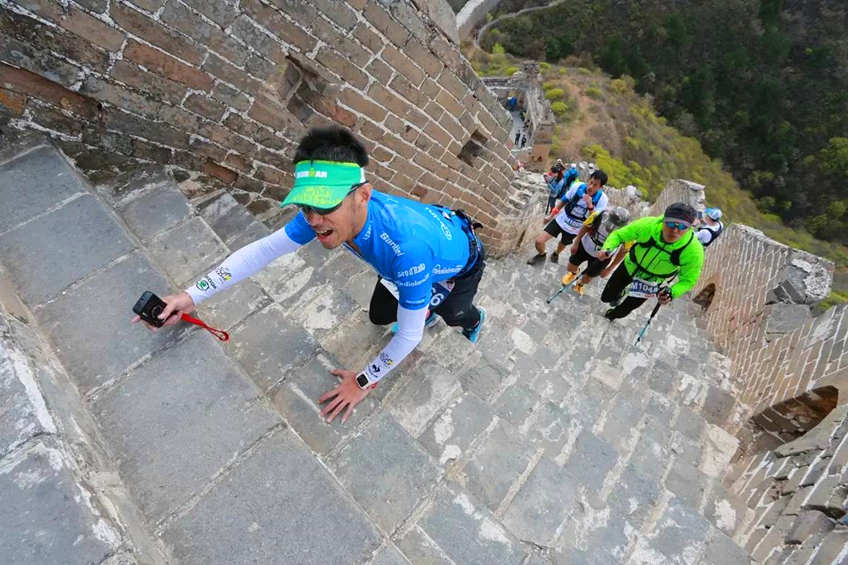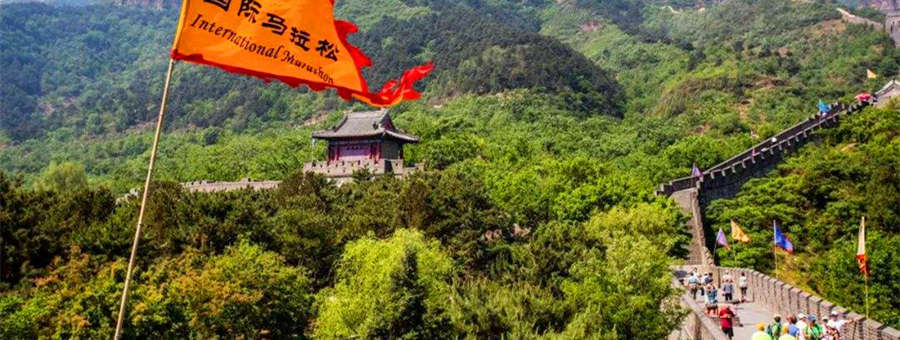The Great Wall of China is one of the greatest marvels that never ceases to amaze its visitors. Without a question, it is on the travel bucket list of historians, cultural vultures, and wanderlusts.
However, this enormous, more than 2000-year-old man-made structure encompasses more than history. The Wall is characterized by its military strength in the past and cultural importance in the present and that makes it exceptional.
If you are planning to a Great Wall of China tour soon, you would love to explore some interesting facts about the destination? These fascinating and fun facts about the Great Wall will make you even more intrigued by it.
1. The Great Wall is a UNESCO Heritage Site
One of the Seven Wonders in the world, The Great Wall of China was inscribed on the UNESCO World Cultural Heritage Site list in 1987.
The Great Wall is more than a military fortress - it is a symbol of Chinese culture and identity. The wall reflects the ancient Chinese philosophy of "feng shui", which emphasises the importance of balancing natural and man-made elements in the environment.
In addition, the Wall has played an important role in Chinese literature, art and folklore for centuries. Poets and writers have depicted the wall's beauty and grandeur, while artists have depicted it in paintings and other works of art.
The Great Wall is one of the first Chinese sites listed on the UNESCO World Cultural Heritage Site list. Other sites include the Forbidden City, Terrocotta Warriors (Mausoleum of the First Qin Emperor) and Mogao Grottoes.
▪ Keep reading: Why is the Great Wall of China Important?
2. Can You See the Great Wall of China from the Outer Space or the Moon?
One of the fun facts about the Great Wall of China - it is an urban myth that humans are able to see the Great Wall with their naked eyes from space or moon.
The debate on this topic has been going on for almost 70 years. In 1969, NASA successfully sent three astronauts to the Moon using the Apollo 11 manned space mission. During this mission, Armstrong, the first American man on the moon, was repeatedly asked if he saw the Great Wall on the moon.
However, he clarified each time that due to the distance of the Moon from the Earth and the limited width of the Wall, even if scaled down to the naked eye, it would be far less than the width of a strand of hair. In addition, natural factors such as the atmosphere, cloud cover, and light all present heavy barriers to visual observation.
Therefore, it is possible to see the Great Wall of China from the Outer Space or the Moon.

3. The Great Wall is Not a Standardized Product
In different regions, various materials and practices of construction were adopted based on the local condition. In the vast West China, due to the lack of stones and bricks, rammed earth were used to build the walls on Loess Plateau, while in the arid region of Gobi desert, the ancient people of Han Dynasty used red willow twigs and reed stems to frame sand and gravel, and made it layer over layer. As the plants got rotten so slowly and sandy soil of high salinity concretized gradually, this became a very affordable and effective method of constructing the long-stretched wall in the desert.
In the eastern part of the wall, stone slabs and slates, bricks together with rammed soil are used. Chinese experts found that 600 years ago, the builders mixed sticky rice syrup with the regular mortar to make it a special type, which bound the bricks together so tightly to resist the earthquakes and other damages.
A fun fact of the Great Wall of China that you may not know -- some Great Walls are made of glutinous rice! The mortar used to lay the bricks and stones was made from a typical mix of limestone and water, but they added a unique ingredient: glutinous rice!
The use of glutinous rice as a building material dates back to the Ming Dynasty. Glutinous rice was mixed with slaked lime, sand and water to make a strong and durable material that would stand the test of time. In addition, it allows workers to use locally available and sustainable materials rather than importing expensive materials from far away.
▪ Keep reading: What is the Great Wall of China Made of?
4. The Great Wall is not a Continuous wall, but a System of Fortifications
Although the Great Wall is often thought of as a large structure running east to west, it is not actually a continuous wall. Separate sections of the Wall were built in different areas during different dynasties, and they may be hundreds of kilometres or more apart.
Especially in some strategic locations like the mountainous areas to the north of Beijing city, to prevent Manchurian invasion, Ming Emperors spared no effort to build several paralleled wall on the mountains to set up a sophisticated defense system to fight against the strong cavalries of Manchurian army.
5. The Great Wall of China was first built before Qin Dynasty
Though many people are likely to attribute the construction of the Great Wall to the first Emperor Qinshihuang (259-210 BC), He is not the first one building the walls, but the person who linked some sections already built by other states he conquered in the northern territory of his empire.
In the following 1800 years, the Great Wall was renovated and extended by the rulers of many dynasties. Currently the remained sections of the Great Wall are mostly built in Ming Dynasty (1368-1644).
▪ Keep reading: Who Built the Great Wall of China?

6. The Great Wall is the Longest Man-made Structure in the World
Total length of the Great Wall is 21,196.18 Km, or 13,170.70 miles, streching north China from east to the west. Most of the sections are in wild mountains. But there are many sections available for travelers to visit, such as Badaling, Mutianyu, Simatai, Junyongguan in Beijing, Gubeikou, Jinshanling and Shanhaiguan in Hebei, Huangyaguan in Tianjin, Jiayuguan in Gansu, etc.
For international travelers, the wall at Mutianyu section is an ideal option with cable car service and toboggan ride if you are traveling to Beijing. If you are an active traveler, ETC has hiking tour products of the Great Wall from 1 to 5 days.
▪ Recommended Great Wall of China tours from Beijing:
7. The Most Popular Section of the Great Wall among Chinese Tourists is Badaling
As the first section of the Great Wall opened for tourists, Badaling hosted a record of 9.9 million arrivals in 2018. The maximum number was 87,500 in one day during the National Day holiday. So please drop your plan of visiting the Great Wall at the first week of October.
8. "The Great Wall" Was not Filmed on the Great Wall
When talking about the interesting facts about the Great Wall of China, you may be wondering are the movie "The Great Wall" shot on this site.
An ambitious Chinese-American co-production, the alternate-history movie - ”The Great Wall” starring global superstar Matt Damon was actually filmed in the movie studios of Beijing and Qingdao (a coastal city of Shandong Province) in 2015, not on the Great Wall.
9. Marathon Race is Annulally held on the Great Wall
Launched in 1999,the Great Wall Marathon at Huangyaguan has become a popular race held every May, in which you can challenge yourself along one of mankind’s greatest monuments. The races start and finish in Yin & Yang Square at the fortress of the Huanyaguang section of the Great Wall in Tianjin Municipality, 130 KM east of Beijing (2.5 hours by car)

10. Badaling Station Was Built under Badaling Great Wall
To protect the Badaling Great Wall and minimize the damage to the historic sites, the Chinese engineers and construction team built the deepest high-speed train station in the world, 102 meters (335 ft.) underground right below Badaling Great Wall, which has been put in use at the end of 2019.
With a maximum depth of 102 metres and an underground construction area of 36,000 square metres, Badaling Great Wall Station is the deepest underground high-speed railway station in China. With a large number of main caves, complex cave types and dense cross nodes, the station is the most complicated concealed excavation cave group station in China.
The excavation span of single hole in the crossing section at both ends of the station reaches 32.7 metres, which is the largest concealed railway tunnel with single arch span in China. The longest passenger access lift has a lifting height of 42 metres, which is the largest passenger lifting height of high-speed railway underground station in China.
More Fun Facts about the Great Wall of China with Figures
- The total length of the Great Wall of China is about 21,196 kilometres (including disappearing sections). Among them, the Qin Great Wall is about 5,000 kilometres and the Ming Great Wall is officially measured at 8,850.8 kilometres, which is about 1/5 of the way around the equator!
- During the Qin Dynasty, more than 2,000 years ago, it took only 9 years to build the main body of the Great Wall, or an average of 1.5 kilometres per day.
- The Ming rulers continued to build the Wall for over 200 years.
- Each brick in the Badaling section weighs about 15kg, with over 300 million bricks used in total.
- The easternmost Great Wall is the Hushan Great Wall in Liaoning, located at 124°30′ East longitude, just 20 kilometres from North Korea.
- The westernmost Great Wall is the Jiayuguan Great Wall in Gansu, located at 98°17′ East Longitude, which has stood on the Gobi desert for 600 years.
- Due to natural weathering and human damage, 30% of the Ming Great Wall has disappeared, of which only 5% of the Gansu section remains visible.
Looking for more interesting facts about the Great Wall of China? Check out 30 Facts About The Great Wall Of China
Further reading:
